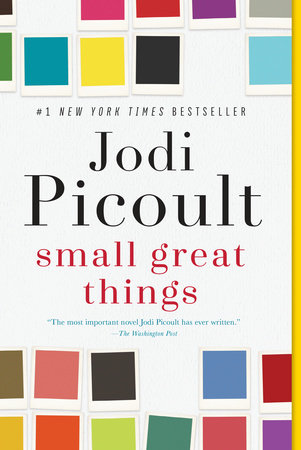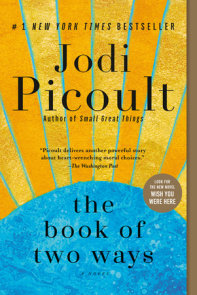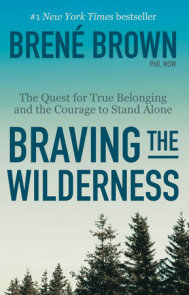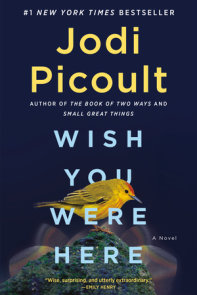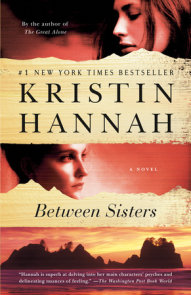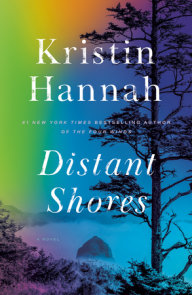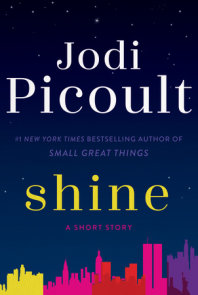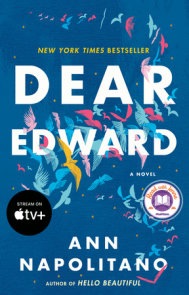TEACHING GUIDE
NOTE TO TEACHERS
Please click on the PDF link at the bottom of this page to download the Teacher’s Guide.
ABOUT THE BOOK
Ruth Jefferson is a labor and delivery nurse at a Connecticut hospital with more than twenty years’ experience. During her shift, Ruth begins a routine checkup on a newborn, only to be told a few minutes later that she’s been reassigned to another patient. The parents are white supremacists and don’t want Ruth, who is African American, to touch their child. The hospital complies with their request, but the next day, the baby goes into cardiac distress while Ruth is alone in the nursery. Does she obey orders or does she intervene?
Ruth hesitates before performing CPR and, as a result, is charged with a serious crime. Kennedy McQuarrie, a white public defender, takes her case but gives unexpected advice: Kennedy insists that mentioning race in the courtroom is not a winning strategy. Conflicted by Kennedy’s counsel, Ruth tries to keep life as normal as possible for her family—especially her teenage son—as the case becomes a media sensation. As the trial moves forward, Ruth and Kennedy must gain each other’s trust, and come to see that what they’ve been taught their whole lives about others—and themselves—might be wrong.
With incredible empathy, intelligence, and candor, Jodi Picoult tackles race, privilege, prejudice, justice, and compassion—and doesn’t offer easy answers. Small Great Things is a remarkable achievement from a writer at the top of her game.
ABOUT THE AUTHOR
Jodi Picoult is the #1 New York Times bestselling author of twenty-five novels, including Small Great Things, Leaving Time, The Storyteller, Lone Wolf, Sing You Home, House Rules, Handle with Care, Change of Heart, Nineteen Minutes, and My Sister’s Keeper. She is also the author, with daughter Samantha van Leer, of two young adult novels, Between the Lines and Off the Page. Picoult lives in New Hampshire with her husband and three children.
NOTE TO THE TEACHER
Beautifully constructed yet at times challenging to read, Small Great Things is a thought-provoking work that explores race and encourages the reader to consider their own role in perpetuating a system that disregards our innate differences. Through a journey into the lives of three distinct characters, Picoult invites the reader to consider how people’s varying experiences shape their perspectives. As with many texts, if one is open to questioning their own assumptions and biases (some of which are inherent in our society), the reading will ultimately provide many opportunities to consider a new way forward. And yet, there isn’t a clear path to solving the myriad of issues that arise from judging others. The first steps may be to simply attempt to understand the positions of others—something Small Great Things is brilliant at achieving.
Supporting the national Common Core State Standards (CCSS) in Reading Literature for high school curricula, Small Great Things is an appropriate selection for grades 11 and 12 in Language Arts classes. At the college level, the book is appropriate for Composition and Literature classes, Race Studies, Sociology, or Culture, and is also ideal for first year/common reading programs.
In the following “Examining Content Using Common Core State Standards” section of this guide, prompts provide for a critical analysis of Small Great Things using the CCSS for Reading Literature for grades 11 and 12, and are organized according to the standards they primarily support. In addition, at the end of each standard and the corresponding prompts, a classroom activity is provided that will further enhance analysis of the text.
For a complete listing of the Standards, go to: tiny.cc/Standards
PRE-READING ACTIVITIES
By encouraging students to engage in metacognitive strategies (lesson ideas and information regarding metacognition can be found here: tiny.cc/metastrategies) coupled with reflection regarding their individual experiences and feelings surrounding race relations, the resultant reading of Small Great Things will allow for a deeply ruminative and engaging experience. Insights into the text will additionally be strengthened by nuanced understandings of the historical, political, and cultural contexts of racial relations in American society.
That said, race is a highly charged topic and students are likely to feel strongly about the many facets of racial issues. Thus, a discussion of race in the classroom may be a difficult subject to broach; as Picoult says in the Author’s Note, “Racism is different. It’s fraught, and it’s hard to discuss, and so as a result we often don’t” (460). Yet, participation in these challenging conversations (as is evidenced in multiple situations in the book) encourages a broadened perspective that extends beyond one’s own experience.
Acknowledging the difficulty in discussing race issues and setting ground rules that govern group conversations are the first steps to ensuring that students feel the classroom is a safe space for an honest dialogue. One way to begin these conversations is by conducting a classroom conversation centered on exploring the definitions of words such as race, racism, prejudice, equality, and privilege, and having students reflect on the societal context of these issues: do they feel these are issues to be resolved and are they ideas that directly impact their day to day lives? Following this conversation and throughout the reading of the novel, allowing students to anonymously submit questions and thoughts they have about these issues will encourage reflection without requiring the risk of sharing in front of the class—though this information could also be used to spur reflective classroom discussions. Further, allowing students to keep a reading journal will encourage them to reflect on their thoughts, ideas, and feelings about race, racism, prejudice, and their reading in a safe environment without judgment. Any and all of these activities will enable students to more clearly situate themselves within the context of the text and will also encourage greater engagement.
If you would like to provide more background knowledge about some of the situations and references included in the text, it would be beneficial to share with students the events that have contributed to the Black Lives Matter movement (tiny.cc/BLMmovement). Also, listening to or reading the transcript of Jodi Picoult’s NPR interview discussing the book (tiny.cc/PicoultInterview) will not only introduce readers to the plot line of the story, but will also provide insights into how and why she wrote the book. See the Resources section of this guide for additional ideas for pre-reading work.
EXAMINING CONTENT USING COMMON CORE STATE STANDARDS
ELS STANDARDS: READING LITERATURE: GRADE 11 & 12
KEY IDEAS AND DETAILS
CCSS.ELA-LITERACY.RL.11-12.1 Cite strong and thorough textual evidence to support analysis of what the text says explicitly as well as inferences drawn from the text, including determining where the text leaves matters uncertain.
Beliefs and Biases: Turk holds disturbing beliefs about the world and those who are different from him; how did his experiences shape the development of his beliefs? Similarly, what beliefs do Kennedy and Ruth hold regarding race and what life experiences contributed to the development of those beliefs? As the characters demonstrate, it can be difficult to identify personal biases; what events prompted the different characters to explore their biases and how did that self-exploration change their point of view?
Belonging: Ruth often tries to distance herself from her background, despite the fact that on the eve of her starting nursing school her mother advised her “. . . don’t forget where you came from” (173). Initially Ruth didn’t understand this advice; when did she begin to develop an understanding of what her mother meant? If Ruth had considered this advice earlier in her life, would her experiences have been different? At the end of the novel, did Ruth experience a sense of belonging?
Love/Hate: At the beginning of Stage Three (453), Picoult included a quote attributed to Nelson Mandela: “People must learn to hate, and if they can learn to hate, they can be taught to love.” Turk is filled with hate for much of the novel, but toward the end of the novel he has a realization: “Maybe however much you’ve loved someone, that’s how much you can hate. It’s like a pocket turned inside out.” Considering the quote and Turk’s experience, did he need to be taught to love or did he have the knowledge all along? What events prompted the changes in him and what did he learn from those events?
Privilege: The experiences of Ruth, Kennedy, and Turk differ greatly and are partially a result of the situations into which they were born. Ruth repeatedly emphasizes that she would not be on trial if not for the color of her skin; what other difficulties did she face simply because of the color of her skin? In what ways did the color of her skin impact her life and her choices? As the story progresses, Kennedy struggles with her own views on race; how did her outlook evolve as the text progressed and what prompted that evolution?
CLASSROOM ACTIVITY
Characters can often be assigned roles in a text (e.g., the hero, the savior, the victim, the villain), the classification of which are influenced by the reader’s biases and background. In this activity, students will explore alternate representations of the characters in the novel in order to explore differing interpretations. Begin with a class discussion characterizing Turk, Kennedy, and Ruth into the various roles: e.g., Ruth as the hero, Kennedy as the savior, and Turk as the villain. Point out specific instances and evidence in the text where these roles are confirmed. Students should then assign each character a role that differs from their initial interpretation (Turk as the hero, Ruth as the victim, Kennedy as the villain) and cite instances in the text that support this new classification. Students should be prepared to share them with the class.
CCSS.ELA-LITERACY.RL.11-12.2
Determine two or more themes or central ideas of a text and analyze their development over the course of the text, including how they interact and build on one another to produce a complex account; provide an objective summary of the text.
Picoult touches on several ideas throughout the course of the text: the search for identity and its implications, the importance of honesty in confronting biases, the dichotomy between hate and love, and the sometimes unintended and often underestimated implicit components of racism. Examine the development of one or more of these themes in the text: how does Picoult establish and contribute to the theme? What “big idea” does she want the reader to take away regarding a particular theme?
The title of the book comes from a quote often attributed to Dr. Martin Luther King, Jr.: “If I cannot do great things, I can do small things in a great way” (173). Ruth’s mother says, “You’re destined to do small great things” (173). Describe the relationship between this quote and the novel as a whole; why did Picoult choose it as the title? Which characters in the book accomplish small great things? Support your conclusions with evidence from the text.
CLASSROOM ACTIVITY
The evolutions of both Turk and Brit touch upon two main themes in the text: the dichotomy between hate and love and the influences that contribute to the shaping of beliefs and biases. Begin by creating a timeline of Turk’s evolution from childhood to the end of the text, including life events and his relationships with people, and consider how these things, e.g., parenthood, change Turk. Then draft a timeline of Brit’s concurrent journey and explore how they both converge and contradict one another. Use your visual representation to write a reflection (or create a presentation) illustrating how outside influences contributed to the development of both Turk and Brit’s beliefs. Also include how their expressions of hatred and love changed throughout the text. Finally, attempt to identify the point at which Turk pivots from a life centering on hate to one centering on love and explain why Brit did not experience the same transformation.
CCSS.ELA-LITERACY.RL.11-12.3
Analyze the impact of the author’s choices regarding how to develop and relate elements of a story or drama (e.g., where a story is set, how the action is ordered, how the characters are introduced and developed).
Picoult frequently jumps back in time to show important moments in each character’s past. How does this contribute to the development of each of the main characters? What did this format choice emphasize about the evolution of each character’s beliefs? How would the use of a different format, e.g., chronological order, have impacted the reader’s understanding of each character?
Adisa is essentially developed in opposition to Ruth: “I’m not the kind of person who sees the bad in everyone; that’s my sister, Adisa” (43). Adisa not only lives a completely different lifestyle than Ruth, but she also is described as having darker skin. How do Adisa’s choices shape some of Ruth’s choices? Compare and contrast the development of Adisa and Ruth as characters in the novel; how do their differences and similarities contribute to the novel as a whole? Why do you think Picoult choose to portray these sisters in contradictory ways? How would the novel and its implications regarding race have been impacted if the sisters had been more alike?
CLASSROOM ACTIVITY
Revisit the first sentences introducing each of the narratives: Ruth (4), Turk (22), and Kennedy (71), and create a visual that includes both the sentences and a list of descriptors for each character based solely on these first sentences. Analyze how and why these sentences shape the first impressions of each character. List verbiage from each of their narratives supporting these initial impressions. Consider the progression of the novel and add any specific words and phrases that signal the characters’ development.
CRAFT AND STRUCTURE
CCSS.ELA-LITERACY.RL.11-12.4
Determine the meaning of words and phrases as they are used in the text, including figurative and connotative meanings; analyze the impact of specific word choices on meaning and tone, including words with multiple meanings or language that is particularly fresh, engaging, or beautiful. (Include Shakespeare as well as other authors.)
The HR employee, Jack DeNardi, explains to Kennedy that Ruth “. . . was passed over for promotions because she was seen by her superiors as a little . . . uppity” (259). What does his choice of the word “uppity” imply about the reason she was passed over for promotions? If Jack DeNardi had instead described Ruth as “assertive” as Kennedy suggests, how would the tone of his statement have changed? Read the article “Yep, ‘Uppity’ Is Racist” (tiny.cc/uppityconnotation) and explain how the denotative and connotative meaning of “uppity” differ.
In Kennedy’s closing arguments she states, “When I started working on this case, ladies and gentlemen, I didn’t see myself as a racist. Now I realize I am” (430). Consider the definition of the word “racist.” How does Kennedy’s understanding of the term change throughout the course of the text? Do you agree with her new understanding of the term? Is she a “racist”?
CLASSROOM ACTIVITY
As Kennedy attempts to convince Ruth to let her finish the trial, she explains that she now understands that Ruth needs “equity” and not “equality” based on her explanation: “Equality is treating everyone the same. But equity is taking differences into account, so everyone has a chance to succeed” (427). Examine the following images—tiny.cc/equalitycartoon and tiny.cc/equityexplanation—and clarify the differences between the terms “equity” and “equality.” Consider the power of Kennedy’s argument and why her words convinced Ruth to give her “one last chance” (427). How are the ideas that Kennedy illustrates applicable to today’s society at large? How do these ideas apply to school culture—is it equal, equitable, or neither? What could be done to address these issues at an institutional level? On an individual level?
CCSS.ELA-LITERACY.RL.11-12.5
Analyze how an author’s choices concerning how to structure specific parts of a text (e.g., the choice of where to begin or end a story, the choice to provide a comedic or tragic resolution) contribute to its overall structure and meaning as well as its aesthetic impact.
“Stage One: Early Labor,” ends with the following: “. . . Where everyone was equal, and it was just one woman, helping another. That miracle, I’ve spent thirty-nine years waiting to see again” (6). How does this ending contribute to the overall meaning of the text? How is this beginning related to the conclusion of Ruth’s final chapter (449)? Would Ruth have considered the end of the trial a miracle similar to the miracle she witnessed in the beginning?
CLASSROOM ACTIVITY
Construct a persuasive argument either in support of or against the idea that Ruth finally glimpses equality through the justice system.
CCSS.ELA-LITERACY.RL.11-12.6
Analyze a case in which grasping a point of view requires distinguishing what is directly stated in a text from what is really meant (e.g., satire, sarcasm, irony, or understatement).
As Ruth is speaking to Corinne, her co-worker and friend, about why she has been dismissed from work, Corinne says: “I’m sure it wasn’t intentional” (121) as an explanation for Carla Luongo’s actions. What was Ruth’s interpretation of that comment, and was her interpretation warranted? Did Corinne intend to take the hospital’s side over Ruth, or was she just clueless as to how to respond? How do Corinne’s later statements during the trial support your understanding?
CLASSROOM ACTIVITY
Kennedy ended her questioning of Detective MacDougall by asking: “. . . Was he wearing a hoodie too?” (364), and Ruth acknowledged the parallels between her own son and Trayvon Martin: “The boy’s death had hit me hard. Not just because he was about Edison’s age but because, like my son, he was an honor student who had been doing nothing wrong, except being Black” (226). Read the article “Tragedy Gives The Hoodie A Whole New Meaning” (tiny.cc/Trayvonhoodie) and identify the parallels between the treatment of Edison by the police and the story of Trayvon Martin. What events precipitated Kennedy asking Detective MacDougall that question and what was she implying?
CCSS.ELA-LITERACY.W.11-12.3.E
Provide a conclusion that follows from and reflects on what is experienced, observed, or resolved over the course of the narrative.
The novel ends with a later view of Turk and touches briefly on Ruth’s life, but Kennedy and Ruth’s narratives are missing. There is a reason that Ruth does not recognize Turk at the end of the book. In what way does this suggest her emotional progress? Was ending with only Turk’s point of view the best conclusion for the novel? If not, how could the conclusion have been improved? If so, explain the benefits of closing with Turk’s perspective.
CLASSROOM ACTIVITY
Choose either Kennedy or Ruth and write a concluding section from their point of view. Consider the format, tone, and experiences of the characters throughout the novel and imagine what their life is like six years later. Write a conclusion that follows from and reflects on their experiences.
RESOURCES
“America Has a Big Race Problem” (tiny.cc/raceproblem): An article that discusses the context of race in a societal context.
“First Encounters With Race and Racism: Teaching Ideas for Classroom Conversations” (tiny.cc/discuss-race ): A New York Times lesson plan that provides ideas for talking about racism in the classroom. A helpful video exploring implicit bias and those biases we hold and don’t even know may provide a good introduction for Kennedy’s point of view in the novel.
“Miss Buchanan’s Period Of Adjustment” (tiny.cc/BrownvsBofEd ): A Revisionist History podcast episode that explores the Brown vs. Board of Education decision and explores the ramifications beyond the decision. Touches on the disadvantages that people of color face and how they are characterized by white people.
“Teaching About Race, Racism and Police Violence” (tiny.cc/ExploringRace): A Teaching Tolerance website page with a plethora of resources intended to spur discussions on a variety of topics including white privilege, the Black Lives Matter movement, and biases.
“Test Yourself for Hidden Bias” (tiny.cc/YourOwnBias ): An introduction to Harvard’s “Project Implicit.” Discusses and defines prejudice, stereotype, and discrimination, and explains the overlapping relationships between these terms. Additionally, a test is provided.
OTHER WORKS OF INTEREST
The New Jim Crow, Michelle Alexander
Between the World and Me, Ta-Nehisi Coates
Freaks and Revelations, Davida Wills Hurwin
Waking Up White: And Finding Myself in the Story of Race, Debby Irving
“I Have a Dream” (speech), Martin Luther King, Jr. (audio available here: tiny.cc/MLK-dream-audio)
Long Walk to Freedom: The Autobiography of Nelson Mandela, Nelson Mandela
Autobiography of a Recovering Skinhead, Frank Meeink and Jody Roy
“The Whole United States Is Southern!”: Brown v. Board and the Mystification of Race, Charles M. Payne
Shine, Jodi Picoult
Citizen: An American Lyric, Claudia Rankine
Courageous Conversations About Race: A Field Guide for Achieving Equity in Schools, Glenn E. Singleton
Why Are All the Black Kids Sitting Together in the Cafeteria: And Other Conversations About Race, Beverly Daniel Tatum
The Hate U Give, Angie Thomas
ABOUT THIS GUIDE’S WRITERS
A Pass Educational Group, LLC has been developing custom, high-quality academic and educational content for our clients since 2009. Learn more about our services at apasseducation.com.
×
Become a Member
Just for joining you’ll get personalized recommendations on your dashboard daily and features only for members.
Find Out More Join Now Sign In








